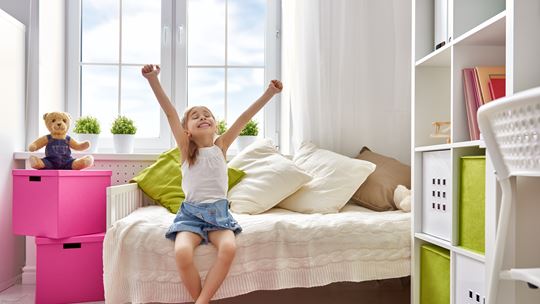
Here at FCA Scotland we have over twenty years of experience in supporting foster families to thrive. As children grow and change, so do their behaviours. If your foster child does not have the ability to verbally communicate their needs, or has not been taught healthy ways of expressing them, they may exhibit behaviours which can be seen as challenging.
Many families find that using positive behaviour management strategies can have an amazing transformative effect on their day to day experiences with their foster children. Below we’ll discover some strategies which you can add to your parenting toolkit which can help guide your foster child's behaviour in a positive way.
The ABC Model
One great way we can promote positive behaviour with children is by using the ABC model of behaviour. This model is often used in classrooms but can be applied in everyday life as a handy tool to help identify patterns and the causes behind certain behaviours. Here we will learn about the steps of the ABC method by applying them to a fictional scenario.
Sonja finds that her three-year-old foster son, Elliot, has becomes distressed every time they visit the supermarket to do the weekly shopping. This week, she decides to make notes on their experience using the ABC method to try and find ways of making the experience more enjoyable for Elliot.
A - Antecedents
The first step of the ABC method is to recognise what was happening before the behaviour occurred, which may have influenced your child’s mood. These can include environmental factors, physical factors, or external triggers.
Sonja: ‘The supermarket is always loud and crowded when we visit on a Saturday morning. Elliot was already tired as he didn’t get much sleep after we got home late from the cinema. He finds the weekly shop boring and often gets distracted by the toy aisle.’
B - Behaviour
The next step is to identify the behaviour itself. A challenging behaviour is any behaviour which may result in negative outcomes for your child or the people around them.
Sonja: ‘Elliot became visibly upset and frustrated as we did the shopping. He began running down the aisles and trying to fill the trolley with sweets and magazines. When I asked him to stop and put the items back, he lay on the floor and began to scream.’
C - Consequences
Finally, the ABC method asks us to consider what happened because of the child’s behaviour, whether intentional or unintentional, and the impact this may have had.
Sonja: ‘I decided to head home early without getting all of the items on my shopping list to avoid causing a disturbance or upsetting Elliot more. I gave him a packet of sweets to try and calm him down while I rushed through the checkout with what I’d managed to grab. He was his usual happy self again by the time we got home.’
Using the ABC method gives Sonja the tools to identify what factors are influencing Elliot’s behaviour, and to find positive behavioural solutions. Let’s explore some positive behavioural strategies which Sonja could use to make the weekly shop a more pleasant experience for herself and her foster son.

Applying Positive Behavioural Strategies
Make Reasonable Adjustments:
Sonja was able to recognise that during busy hours the supermarket was too overwhelming for her foster son. Making small adjustments to accommodate for Elliot’s needs, such as visiting during a quieter time and when Elliot is well rested, could help to ensure that he has a more enjoyable experience when they visit in future.
Help Your Child to Feel Involved:
Sonja knew that Elliot found shopping to be a chore. She could involve her foster son in the shopping process to make an otherwise dull task more like a fun game they can play together. She could do this by using lots of praise and by asking Elliot to help find items on the shopping list, having put them in the shopping trolley, and by encouraging him to use his counting skills and identify the colour of items.
Reward Good Behaviour:
By giving in and buying sweets as a way of keeping Elliot entertained until they could leave the shop, Sonja inadvertently rewarded a bad behaviour. This makes it more likely that Elliot will repeat the same behaviour again, anticipating the same reward. In future Sonja could allow Elliot to pick out a packet of sweets or a magazine as a thank you for his help with the shopping when they have finished finding all of the items on their list together. Rewarding good behaviour, whether with verbal praise or small treats, encourages children to behave in a positive way.
These positive behaviour strategies can be used across a wide range of challenging behaviours to help promote positive behaviour in every area of your foster child’s life. If you feel you require additional support, get in touch with us here at FCA Scotland. Our Team Parenting approach provides you and your foster child with a wrap-around network of support. Depending on the child’s needs, this may include therapists, education leads, social workers and a participation service that actively engages children – all working together to ensure the best outcomes for the children in your care.
If you’re interested in becoming a foster carer and changing the lives of young people in Scotland, you can learn more about the different types of fostering and how you can turn fostering into a career.





